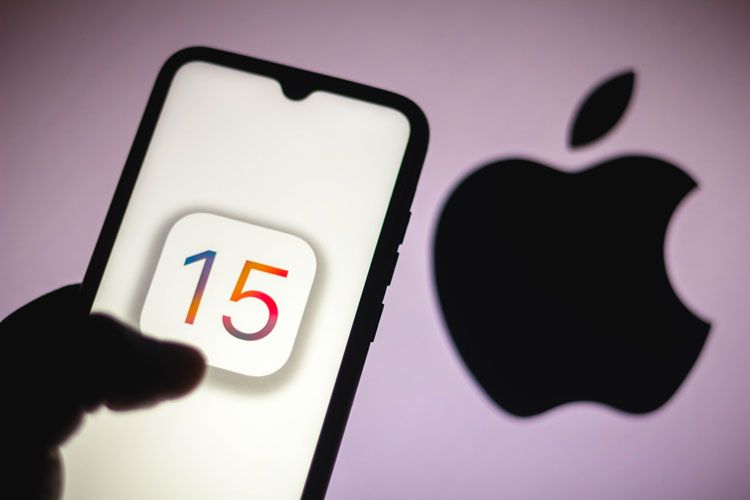Apple iOS 15 Digital Legacy Program Offers Some Control Over An Account After Death; Follows Efforts From Facebook And Google
The release of iOS 15 will introduce a way for Apple users to name someone to manage their account after death.

Facebook’s “My Legacy Contact” allows a user to name a person to have some control over their account after a death. Google offers “Inactive Account Manager,” which lets users set a time (up to a year-and-a-half) of inactivity before an account is deleted or the contact they named is permitted access. Now Apple has introduced its own Digital Legacy program, which will be included among the iOS 15 software updates rolling out this fall.
Apple’s system works a little differently than Facebook and Google. It requires you to generate a code and share that code with a trusted contact, who will then have limited access to your account. Once you install iOS 15 on your phone or iPad here’s how you set it up:
How To Set Up Digital Legacy On Your iPhone
- Open your iPhone Settings
- Tap your name (often with a picture you, or your kids, or your pet) at the top of the screen
- Choose “Password and Security”
- Tap “Legacy Contact” (if you don’t see this then Apple hasn't rolled out this particular release on iOS 15 yet so check back after your most recent update)
- Tap “Add Legacy Contact” (you'll get another prompt for this)
- Sign in using your Apple ID password
- Your contacts will open; choose the person you want to be your Legacy Contact
- Their information is revealed and you can tap their phone number
- Hit continue
At this point Apple generates an access key for your account, which your legacy contact will need to download your data after your death. It’s like the backup codes you may receive when enabling two-step verification on an account (that’s when you get a text to complete the login process; backup codes are a way to gain access when you change phones or get locked out) or encrypt a harddrive (nerds know what we’re talking about).
Finally, you'll get a prompt about printing your access key with the suggestion to share it directly with your contact as well as include a copy with your estate planning documents (**cough** we suggest putting it in your Everplan),
Here’s What A Legacy Contact Can See
Your legacy contact doesn’t get the full keys to the iKingdom, but according to Apple they can:
- View your emails, photos, notes, and other data on iCloud
- Download a copy of your data from Apple’s privacy site (you need to login to see this information)
- Use the downloaded copy of your data to restore it from an iCloud backup
Your contact won't have access to the following:
- Payment information (example: credit cards, debit cards)
- Purchased licensed media (movies, music, books, etc.)
- Subscription logins (news, games, wellness, etc.)
- Keychain, which is Apple’s password management system
This is pretty much in line with Facebook and Google, where you get some access but not all. If you spent years building up a library of purchased music and books, or want your contact to access all your passwords via Keychain, you’ll have to share that information separately.
If you want your contact (or executor) to have access to everything, one thing we suggest on this site and in our book In Case You Get Hit By A Bus is to circumvent these systems and share the login information with someone you trust.
These massive digital companies don’t want you to do that. They claim it’s for security purposes, which is valid (especially when it involves passwords and other private information), but control is another factor. It’s unfortunate you can’t pass your digital purchases and information to the next generation like you would a box of books, which is why sharing the login credentials might be your only realistic option. Perhaps if Apple, Amazon, Facebook, Google, and Microsoft came up with a solution to merge accounts of the deceased into your own we wouldn’t need a workaround, but we haven’t reached that day yet.
What Do You Do With The Key Once You Have It?
If you’ve been named as a legacy contact and don’t have the key you can request access to their account. You’ll need proof of death documents (often a death certificate) to delete their Apple ID and have the activation lock removed from their devices. You must be named a legacy contact for this to be easy; if you weren’t named as a legacy contact but are the executor of the estate it’ll be a more involved process like it is now.
All of this is a nice step in the right direction, though naming a legacy contact when you’re setting up a phone isn’t top of mind (usually). Hopefully Apple does more than Facebook and Google have done to get people to pick a person and get it out of the way to save problems down the road.
Once you’ve named a contact, shared the key, and, um, cease to be alive, your contact has to login to the Digital Legacy portal, enter the code, and start the process. Here’s some more info from the official support site:
“After you sign in using your Apple ID, you'll be asked to provide the Apple ID for the account that you want to be deleted. If you're not sure whether the email address that you have for the deceased person is associated with an Apple ID, you can use iforgot.apple.com to check.
We have great sympathy for surviving family members. As soon as we receive the request and required documentation, we'll begin the deletion process. Note that for security purposes, we verify all deletion requests. The Apple ID will remain active while verification is in progress.”
Apple also recommends including details in your estate plans:
“We encourage customers to add an inheritance plan to their will that covers the personal information they store on their devices and in iCloud. This may simplify the process of deleting an account or acquiring a proper court order.”
We understand that all this talk of “keys,” “deleting Apple IDs,” and “activation locks” can get very confusing. But that shouldn’t dissuade you from taking action and making plans for your digital assets, whether it’s through the provided method of the company or sharing passwords on the side.
How Does Apple Know You’re Dead?
Great question! They don’t. This is why their system relies on you naming a person you trust who wouldn’t lie about your death to nefariously gain access to your account. Trust us when we say death verification isn’t as easy as it sounds.
There is no grand master list of people who died that’s completely current and reliable for everyone to access. For this reason we had to design our own system for the Everplans platform, which is called Sharing After Death (SAD). This allows you to decide which sections of your Everplan you want to share with each Deputy now, and which sections should only be shared after you’re gone. Still doesn’t answer the “how do we know you're dead” question, does it? Enter, the “unlockers,” who are people you completely trust to contact us and report your death. After a death is reported, here’s how the process goes:
“After reporting your death, the Deputy must wait while Everplans attempts to contact you via email with the opportunity to block the unlocking. You can choose a wait time for your unlockers of up to 30 days.
If we do not hear back from you and the wait time expires, you are marked as deceased in our database, and your “After Death” sections are unlocked for all your Deputies.”
It’s our mission to help people when emergency strikes and loved ones need this valuable information, which is why we’ve designed a comprehensive solution. It’s not a priority for companies like Apple, Google, or Facebook. These companies, along with the majority of the human race, don't want to think about death. However, as more and more people who used these products started to disappear off the earth, they needed to create some sort of automated solution, which is why “legacy contacts” and “inactive account manager” tools came to be.
A First Step That Has Nothing To Do With Dying: Account Recovery Contacts
Apple has come up with a way to ease a person into planning for the unexpected without being deathy: iOS 15 makes it easier to recover your account if you get locked out. All you have to do is choose one or more people you trust to become an “Account Recovery Contact'' to help you reset your password and regain access to your account. This is much more realistic and helpful for the majority of people, especially ones that refuse to use a password manager. Plus, odds are, this is the same person you’d name as a legacy contact, allowing you to get both of these things done at the same time.
[Editorial photo credit: rafapress / Shutterstock.com]
- Task: Get Your Passwords OrganizedThe typical person has an average of over 200 different online accounts,...Read more
- Digital Cheat Sheet: How To Create A Digital...What happens to your digital property after you die? Great question! Here's...Read more
- Task: Grant Access To Your DevicesIn case of an emergency, how could someone you trust access your phone?Read more
- Task: Clean Up Your Phone ContactsWe’re all familiar with naming an emergency contact if something happens,...Read more



